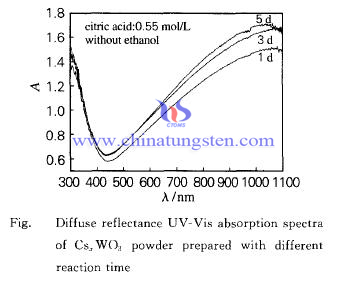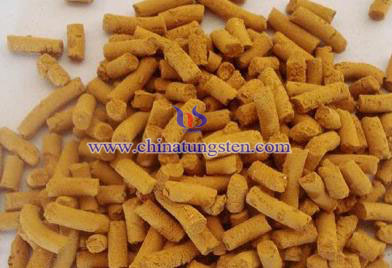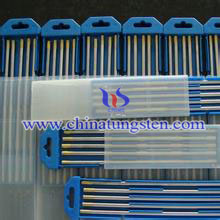Tungsten Copper Sheet Properties
- Details
- Category: Tungsten Information
- Published on Thursday, 31 March 2016 16:26
- Written by xiaobin
- Hits: 293
Tungsten copper sheet properties refer to phase analysis, micro-structure observation and other properties detection. The phase analysis can be specifically divided into DTA (Differential Thermal Analysis), XRD phase analysis (X-ray Diffraction), component test and so on. DTA uses differential thermal analyzer, the principle is to compare by not undergo any chemical reactions and physical changes at a certain temperature stable substance as a reference with an equal amount of measured (tungsten copper sheet) in the same environment under constant variable temperature conditions. Any physical and chemical changes on the measured and it is located in the same environment as compared to the standard temperature will be a temporary increase or decrease. The XRD phase analysis uses copper K radiation target, adjust current, voltage, and scanning rate, the measured characteristic X lines of tungsten copper sheet specimen major constituent phases.
For tungsten copper material, component test usually uses dilute nitric acid - hydrofluoric acid solution, which due to W will precipitate in nitric acid medium in the form of acid and separated from the Cu. Next ammonium hydroxide precipitate was dissolved tungstate, ammonium tungstate determination of tungsten burning gravimetric method; then inductively coupled plasma atomic emission spectrometry filtrate the residual tungsten, both of which add up to the total amount of tungsten. The process of micro-structure of tungsten copper sheet detecting is Sandpaper milling → Washing → Polishing (Al2O3) → Washing → Alcohol Cleaning → Drying → Detecting Sample.
The performance tests include density test, hardness test (Vickers hardness HV), resistivity (electrical conductivity) test, thermal conductivity test, coefficient of thermal expansion test and so on. Density test uses a classic method of drainage method of Archimedes; micro hardness is measured by the length of indentation of diamond indenter pressed into the surface of the sample; the resistivity usually uses bridge method; Thermal conductivity is the first on the surface of tungsten copper sheet sample sprayed on the surface of the toner in order to prevent the reflection of incident light, then at a certain temperature using the flash method thermal analyzer heating element xenon lamp emits a pulse beat in the sample surface, warmed by the infrared detector measures the situation was thermal diffusivity.
| Tungsten Copper Supplier: Chinatungsten Online tungsten-copper.com | Tel.: 86 592 5129696; Fax: 86 592 5129797;Email:sales@chinatungsten.com |
| Tungsten News & Prices, 3G Version: http://3g.chinatungsten.com | Molybdenum News & Molybdenum Price: http://news.molybdenum.com.cn |
Tungsten Copper Sheet Process
- Details
- Category: Tungsten Information
- Published on Thursday, 31 March 2016 16:24
- Written by xiaobin
- Hits: 272
Due to tungsten copper material is composed of two kinds of metals with a great difference in melting point, which copper evaporates and takes off part of heat for equipments working well at high temperature. Especially in some electronic components with high power and easily heated, tungsten copper as heat sink has wide applications. However, with the rapid development of electronic science and technology, electronic components have become smaller and more precise, which places a greater demand on tungsten copper sheet and heat sine materials. Conventional process of tungsten copper sheet has some defects in thickness and density, so it is difficult to meet the requirements of the properties of heat sink materials. In order to fabricate tungsten copper sheet with uniform thickness and high density, the researchers study on three levels, which include continuous liquid phase sintering, cold rolling and re-sintering.
In the process of continuous liquid phase sintering, the preparation of raw material is also crucial. It should be noticed that the content of elements and granularity, the additives, the stirring time, the granulation process, drying temperature, forming pressure, blank density detection and many parameters controlling. Continuous liquid phase is conducted in molybdenum wire furnace under the protection of hydrogen. It puts tungsten copper sheet in the high temperature zone and holds a period of time, and then push to end cooled rapidly cooled to obtain the sintered sample. Afterwards, The sintered samples in the two-roll cold rolling mill and cold rolling deformation measurements, observed by optical microscopy that is rolling a longitudinal section (parallel to the rolling direction), the evolution of the cross-section (perpendicular to the rolling direction) of the microstructure. Finally, re-sinter tungsten copper sheet after cold rolling in the molybdenum wire furnace under the protection of hydrogen, and temperature should be controlled 1300℃ (above the melting point of Cu), in the high temperature zone without holding time in case of grain growth.

| Tungsten Copper Supplier: Chinatungsten Online tungsten-copper.com | Tel.: 86 592 5129696; Fax: 86 592 5129797;Email:sales@chinatungsten.com |
| Tungsten News & Prices, 3G Version: http://3g.chinatungsten.com | Molybdenum News & Molybdenum Price: http://news.molybdenum.com.cn |
Reaction Time Effect on CsxWO3 Powder Absorbance
- Details
- Category: Tungsten Information
- Published on Thursday, 31 March 2016 10:13
- Written by xinyi
- Hits: 300


| Tungsten Oxide Supplier: Chinatungsten Online www.tungsten-oxide.com | Tel.: 86 592 5129696; Fax: 86 592 5129797;Email:sales@chinatungsten.com |
| Tungsten News & Prices, 3G Version: http://3g.chinatungsten.com | Molybdenum News & Molybdenum Price: http://news.molybdenum.com.cn |
WO3 Desulfurization Catalyst Environmental Effects
- Details
- Category: Tungsten Information
- Published on Thursday, 31 March 2016 16:22
- Written by chunyan
- Hits: 277

| Tungsten Oxide Supplier: Chinatungsten Online www.tungsten-oxide.com | Tel.: 86 592 5129696; Fax: 86 592 5129797;Email:sales@chinatungsten.com |
| Tungsten News & Prices, 3G Version: http://3g.chinatungsten.com | Molybdenum News & Molybdenum Price: http://news.molybdenum.com.cn |
Lanthanum Tungsten Electrode Analysis
- Details
- Category: Tungsten Information
- Published on Wednesday, 30 March 2016 16:16
- Written by yiping
- Hits: 292

Lanthanum tungsten electrode is mainly produced by powder metallurgy method. It is added 1%, 1.5% or 2% lanthanum oxide to tungsten powder, after doping, reduction, vertical melt, swaging and stretching to obtain lanthanum tungsten electrode. Lanthanum tungsten electrodes have good welding performance, long service life, and no radioactive contamination, so it is considered the best substitute for thorium tungsten electrode and it is widely used in tungsten inert gas welding (TIG welding), plasma welding and cutting field. By comparison electrical property found, lanthanum tungsten electrode’s electrical property is superior to cerium tungsten electrode and thoriated tungsten electrode. Lanthanum oxide, having low mobility and evaporation rate, can form a good lap dovetail organization, so lanthanum tungsten electrode has good high temperature creep performance.
After swaging process, La2O3 particle is evenly distributed over the tungsten grain and boundaries. If not properly control billet processing, it is prone to delamination or peeling. On the other hand, if feeding too fast in swaging process can also cause delamination or peeling.
After electrical property analysis understand the La and Ce distribution in lanthanum tungsten electrode and cerium tungsten electrode. At DC 200A, for 20min, the electrode tip working at high temperature 2600 ~ 3000 ℃, La2O3 and Ce2O3 from the center migrate to the surface and to the tip. Their average content decreased gradually from the edge to the center portion and there has almost no La2O3 andCe2O3. Ce2O3 has faster migration and evaporation rate.
After electrical property test observed electrode’s microstructure found that the electrode grains grow along axial direction. The grains aspect ratio of cerium tungsten electrodes and lanthanum tungsten electrode is respectively (3: 1 to 15: 1), (3: 1 to 7: 1). In lanthanum tungsten electrode there are a large number of bubbles and a small amount of La2O3 particle. Besides, grain boundaries are dovetail lap organizations which can impede grain boundary sliding laterally, so it has better thermal shock, creep performance. Lanthanum tungsten electrode electrical property is better than other electrodes.
| Tungsten Metals Supplier: Chinatungsten Online www.tungsten.com.cn | Tel.: 86 592 5129696; Fax: 86 592 5129797;Email:sales@chinatungsten.com |
| Tungsten News & Prices, 3G Version: http://3g.chinatungsten.com | Molybdenum News & Molybdenum Price: http://news.molybdenum.com.cn |





 sales@chinatungsten.com
sales@chinatungsten.com